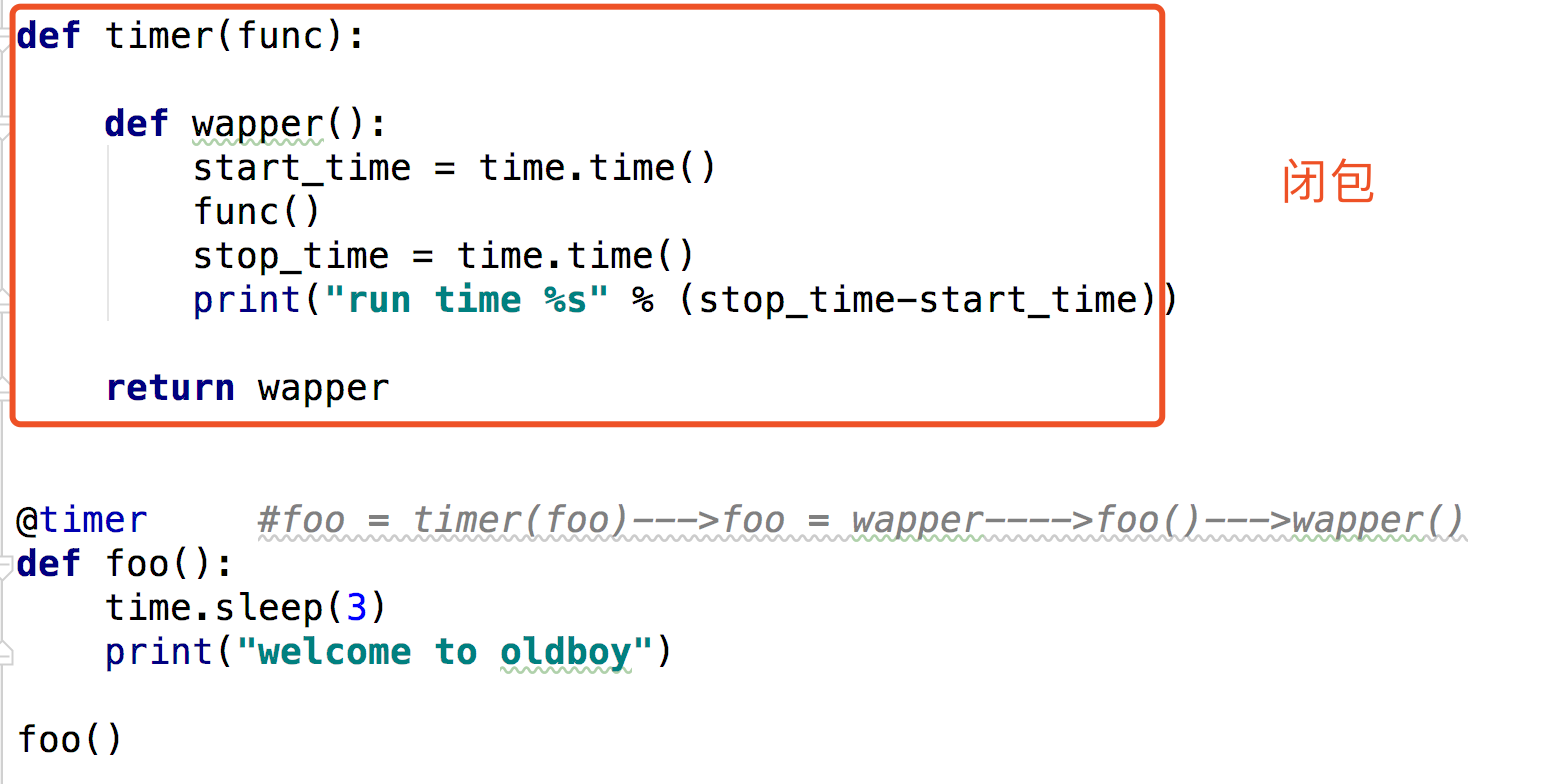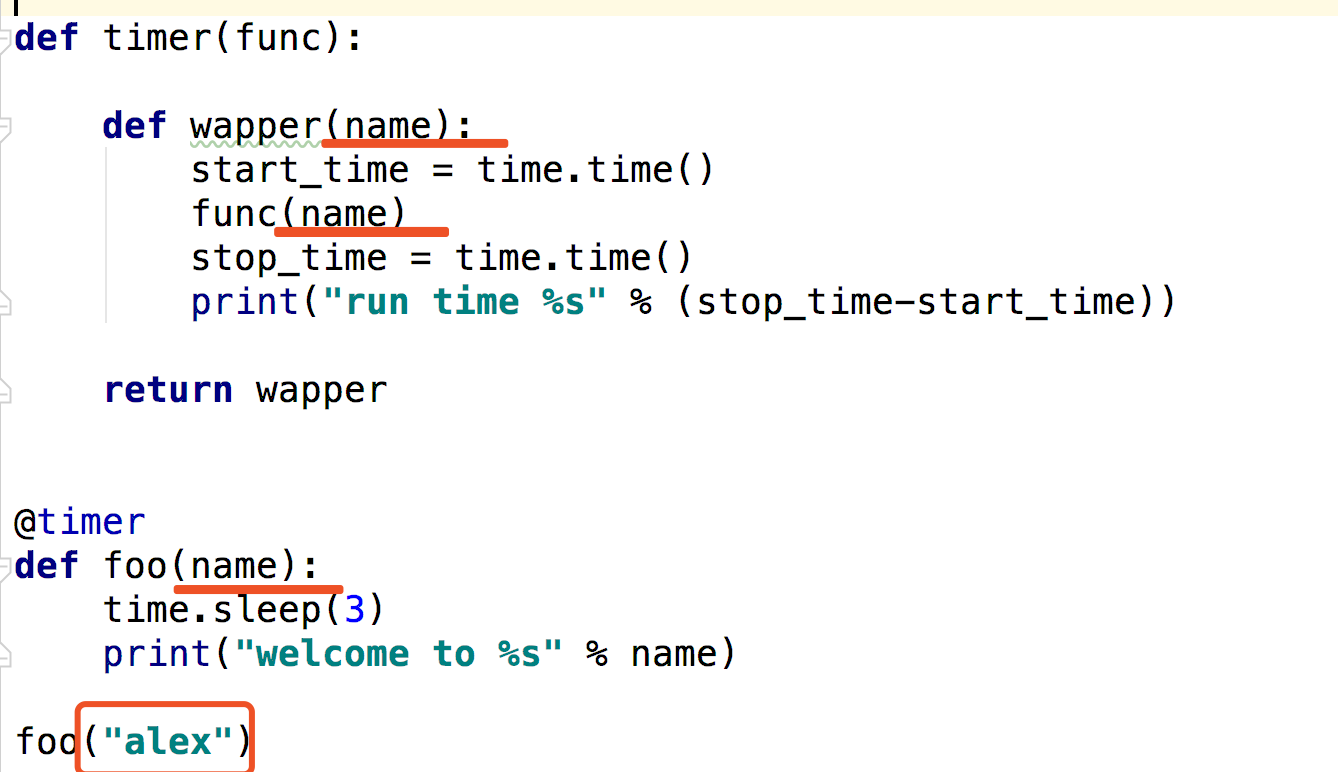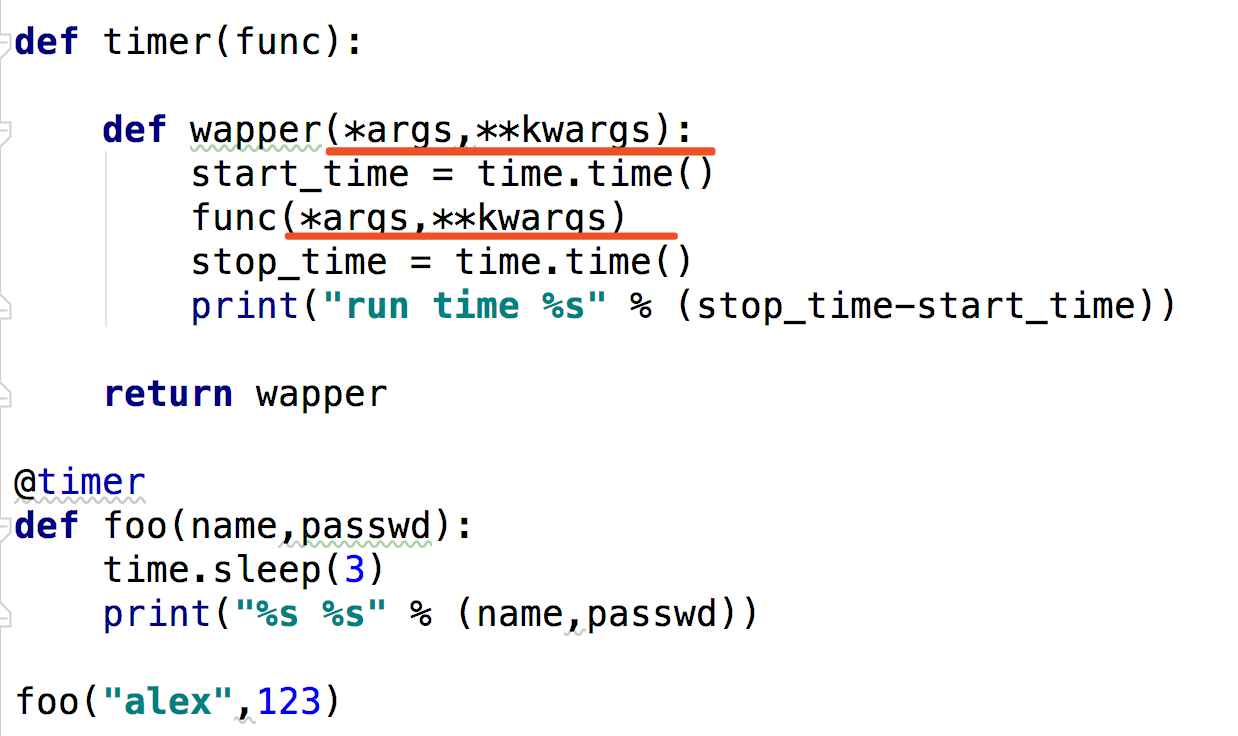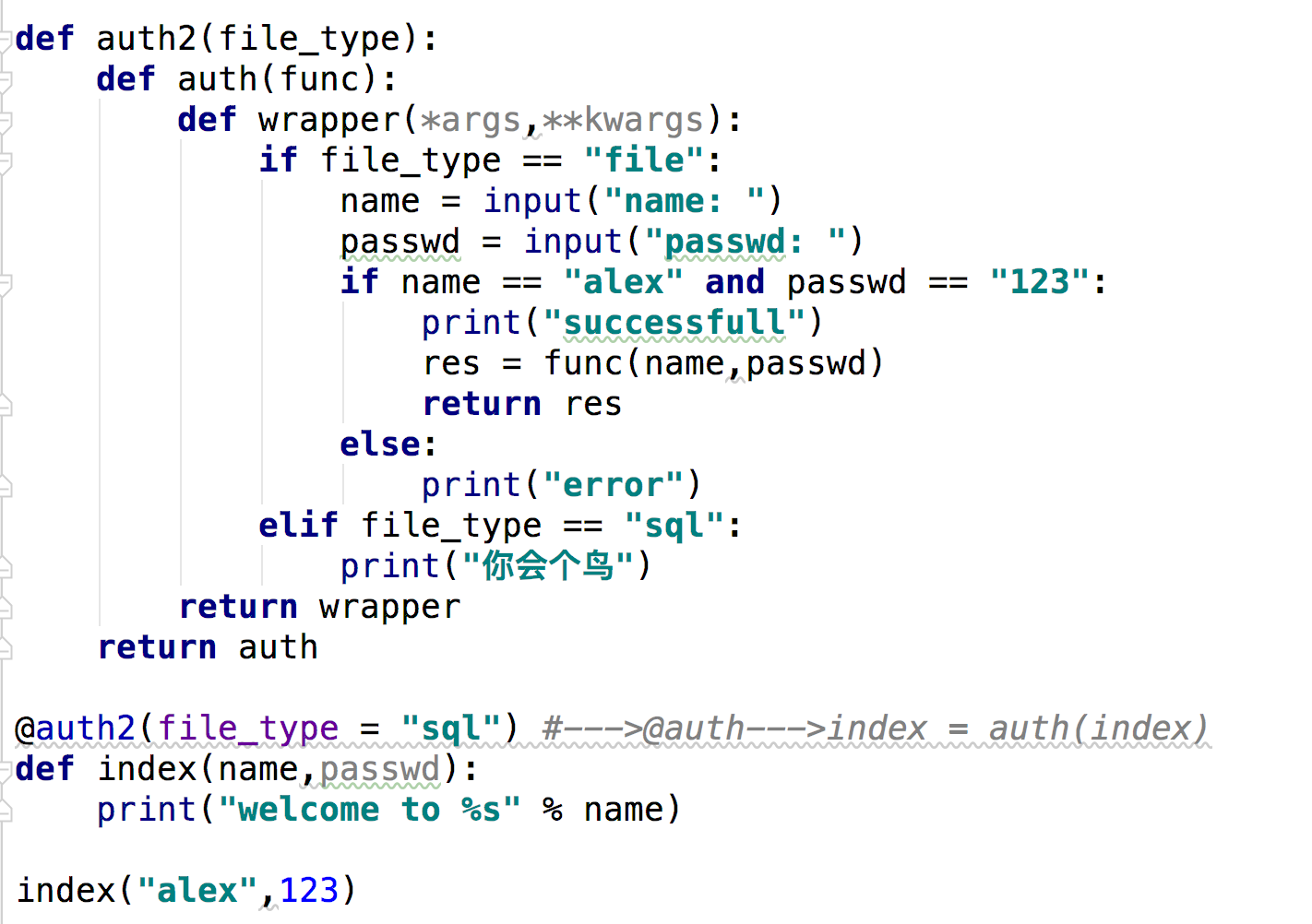装饰器
1.无参数

2.函数有参数

3.函数动态参数

4.装饰器参数

装饰器的应用
下面题目同http://www.cnblogs.com/xuyaping/p/6679305.html,只不过加了装饰器统计时间和认证功能。
1、定义无参装饰器为被装饰器添加统计运行时间的功能
#定义闭包无参函数,为程序增加统计时间功能
import time
def timer(func): #定义timer函数,func变量值为login
def wrapper():
start_time=time.time() #设置函数起始时间
func() #函数名加()调用函数,即调用login(),然后调用结束后继续在wrapper函数中运行
stop_time=time.time()
print("run time is %s"%(stop_time-start_time))
return wrapper #返回wrapper函数名,然后再次进入wrapper函数
@timer #相当于timer(login)-->赋值给timer函数名
def login():
#读取注册用户的信息,用户名,密码,输错次数,写入字典中
user={}
with open("DB1",encoding="utf8") as f:
for line in f:
username_list=line.strip().split("|") #username_list--->['egon', '123', '2']
user[username_list[0]]={"name":username_list[0],
"pwd":username_list[1],
"times":username_list[2]}
# print(user) #-->{'egon': {'name': 'egon', 'pwd': '123', 'times': '2'}, 'xuyaping': {'name': 'xuyaping', 'pwd': '123', 'times': '0'}, 'xyy': {'name': 'xyy', 'pwd': '123', 'times': '1'}}
#读取黑名单用户,将黑名单用户加入列表中
with open("black_lockname",encoding="utf8") as f1:
black_list=[]
for line in f1:
black_list.append(line.strip())
# print(black_list)
while True:
username = input("please input your username:").strip()
passwd = input("please input your passwd:").strip()
#用户在黑名单中
if username in black_list:
print("该用户为黑名单用户,请滚")
break
# 用户为注册用户
elif username in user:
user[username]["times"]=int(user[username]["times"])
if user[username]["times"]<3 and passwd==user[username]["pwd"]:
print("登录成功")
user[username]["times"]=0
#将修改后的信息重新写入DB1中
with open("DB1","w",encoding="utf8") as f3:
for i in user:
f3.write(i + "|" + user[i]["pwd"] + "|" + str(user[i]["times"]) + "
")
break
else:
user[username]["times"]+=1
print("登录错误")
# 将修改后的信息重新写入DB1中
with open("DB1", "w", encoding="utf8") as f3:
for i in user:
f3.write(i + "|" + user[i]["pwd"] + "|" + str(user[i]["times"]) + "
")
if user[username]["times"]==3:
black_list.append(username)
print("账户被锁定")
# 将修改后的信息重新写入black_lockname中
with open("black_lockname","w",encoding="utf8") as f4:
for j in black_list:
f4.write(j+ "
")
break
#用户不是注册用户
else:
print("该用户没有注册")
break
login()
2、定义有参装饰器为被装饰器添加认证功能:用户的信息可以来源于file也可以是ldap,三次验证失败锁定用户
#定义闭包有参函数,为程序增加验证功能
def auth2(auth_type):
def auth(func): #func参数此时被赋值为login
def wragger(*args,**kwargs): #wragger函数携带变量auth_type的值
if auth_type=="file":
func() #运行函数login
elif auth_type=="ldap":
print("你他妈还想不想玩了?")
return wragger
return auth
@auth2(auth_type="file") #相当于运行函数auth2(file),返回auth,auth(login)赋值给login函数名
def login():
#读取注册用户的信息,用户名,密码,输错次数,写入字典中
user={}
with open("DB1",encoding="utf8") as f:
for line in f:
username_list=line.strip().split("|") #username_list--->['egon', '123', '2']
user[username_list[0]]={"name":username_list[0],
"pwd":username_list[1],
"times":username_list[2]}
# print(user) #-->{'egon': {'name': 'egon', 'pwd': '123', 'times': '2'}, 'xuyaping': {'name': 'xuyaping', 'pwd': '123', 'times': '0'}, 'xyy': {'name': 'xyy', 'pwd': '123', 'times': '1'}}
#读取黑名单用户,将黑名单用户加入列表中
with open("black_lockname",encoding="utf8") as f1:
black_list=[]
for line in f1:
black_list.append(line.strip())
# print(black_list)
while True:
username = input("please input your username:").strip()
passwd = input("please input your passwd:").strip()
#用户在黑名单中
if username in black_list:
print("该用户为黑名单用户,请滚")
break
# 用户为注册用户
elif username in user:
user[username]["times"]=int(user[username]["times"])
if user[username]["times"]<3 and passwd==user[username]["pwd"]:
print("登录成功")
user[username]["times"]=0
#将修改后的信息重新写入DB1中
with open("DB1","w",encoding="utf8") as f3:
for i in user:
f3.write(i + "|" + user[i]["pwd"] + "|" + str(user[i]["times"]) + "
")
break
else:
user[username]["times"]+=1
print("登录错误")
# 将修改后的信息重新写入DB1中
with open("DB1", "w", encoding="utf8") as f3:
for i in user:
f3.write(i + "|" + user[i]["pwd"] + "|" + str(user[i]["times"]) + "
")
if user[username]["times"]==3:
black_list.append(username)
print("账户被锁定")
# 将修改后的信息重新写入black_lockname中
with open("black_lockname","w",encoding="utf8") as f4:
for j in black_list:
f4.write(j+ "
")
break
#用户不是注册用户
else:
print("该用户没有注册")
break
login()